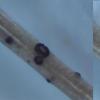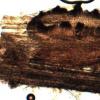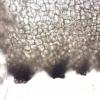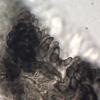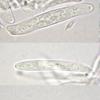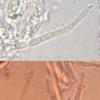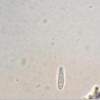
18-12-2025 17:23
 Bruno Coué
Bruno Coué
Bonjour,je serais heureux d'avoir votre avis sur c

18-12-2025 21:17
Pol DebaenstThe identification took me to Byssonectria deformi

18-12-2025 18:07
Margot en Geert VullingsThese plumes were found on rotten wood.They strong

17-12-2025 18:35
 Michel Hairaud
Michel Hairaud
Bonjour à tous/Hi to everyone I am passing along

15-12-2025 15:48
 Danny Newman
Danny Newman
Melanospora cf. lagenaria on old, rotting, fallen

15-12-2025 15:54
 Johan Boonefaes
Johan Boonefaes
Unknown anamorph found on the ground in coastal sa

15-12-2025 21:11
 Hardware Tony
Hardware Tony
Small clavate hairs, negative croziers and IKI bb

15-12-2025 07:09
 Danny Newman
Danny Newman
indet. Rutstroemiaceae sp. on unk. fallen leavesMc
Apothecia are at first immersed in the substrate when they are more or less spherical with a small ostiole. They then becoming erumpent and urceolate, <140 µm diam. The hymenium is pale cream with a light brown exterior and rough dark brown "teeth" on the margin.
The excipulum is a brown textura angularis/globulosa. Marginal cells are dark brown and form irregular "teeth".
Asci are 26-32 x 4-5 µm, 8-spored, apex blue in IKI. They are mostly immature.
Paraphyses are narrowly cylindrical, ca 1.5 µm wide, about as long as asci.
Spores are hyaline, 0-septate, 7-9 x 1.5-2 µm, fusiform-clavate.
I think it belongs in the Naevioideae but this isn't a group I'm very familiar with and I haven't been able to put a name to it. As ever, I'd be very grateful for any suggestions.
Marcus

Zotto
Maybe the teeth could suggest some sort of Pirottaea (which probably belong to multiple lineages in Pyrenopeziza).
Many members of the Pyrenopeziza lineage are extremely common on grasses (based on anamorphs, grass disease symptoms and DNA sequences), but their DNA and teleomorph morphology haven't been linked up yet.
Cheers,
Brian
Thanks for pointing me in the right direction. This will have to be added to my large collection of unnamed specimens.
I've been trying to get to grips with the commoner species of Mollisia and Pyrenopeziza over the last few months. It's not easy!
Marcus

